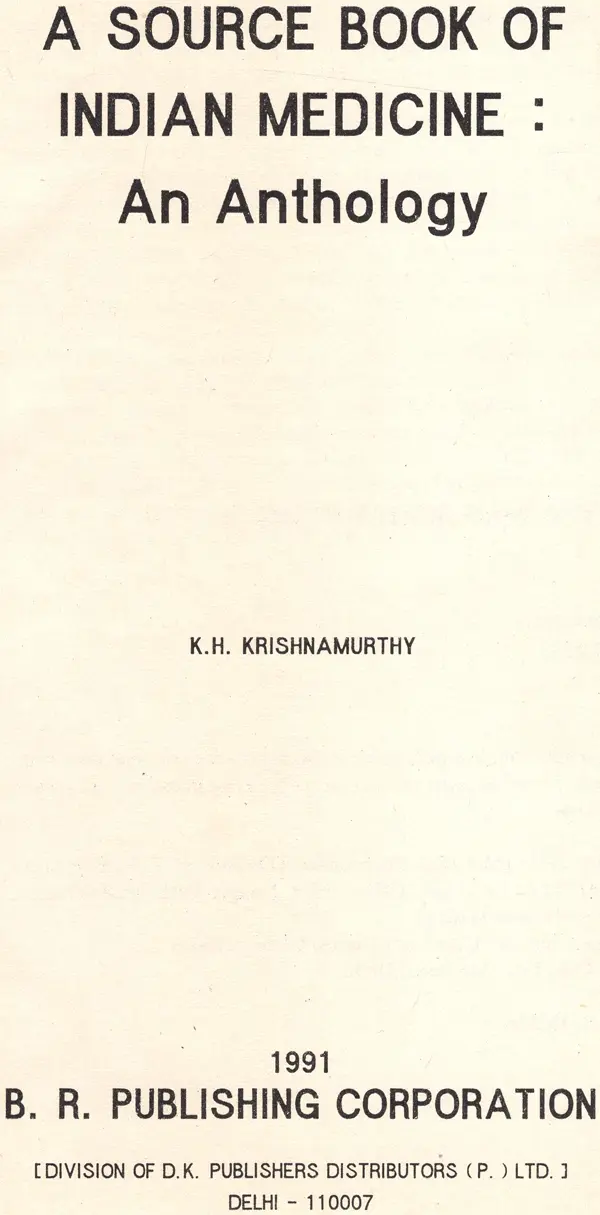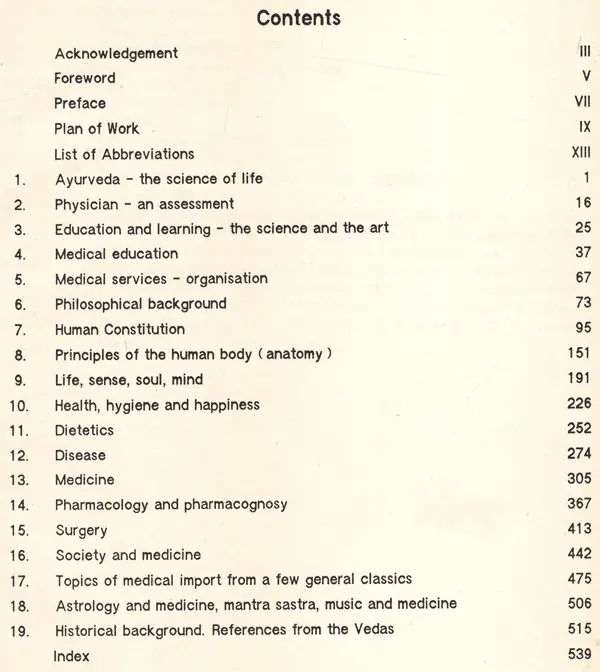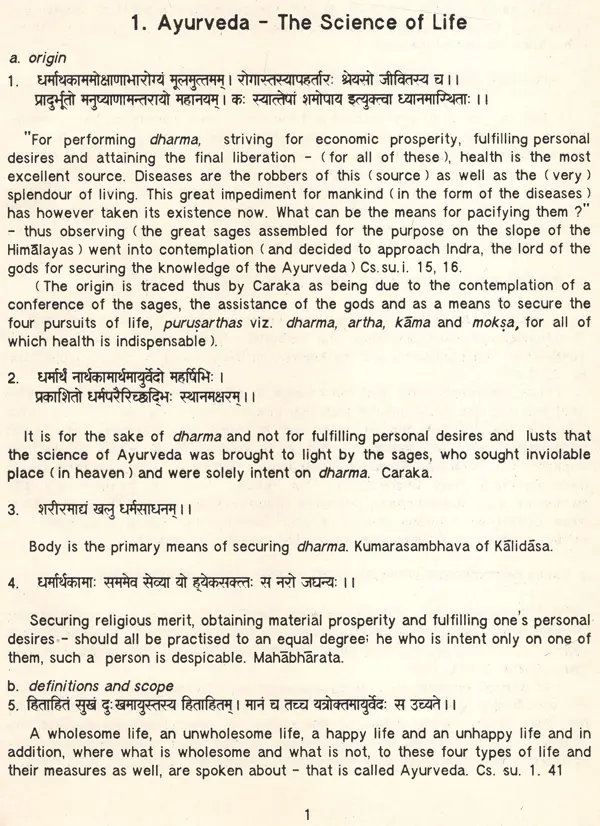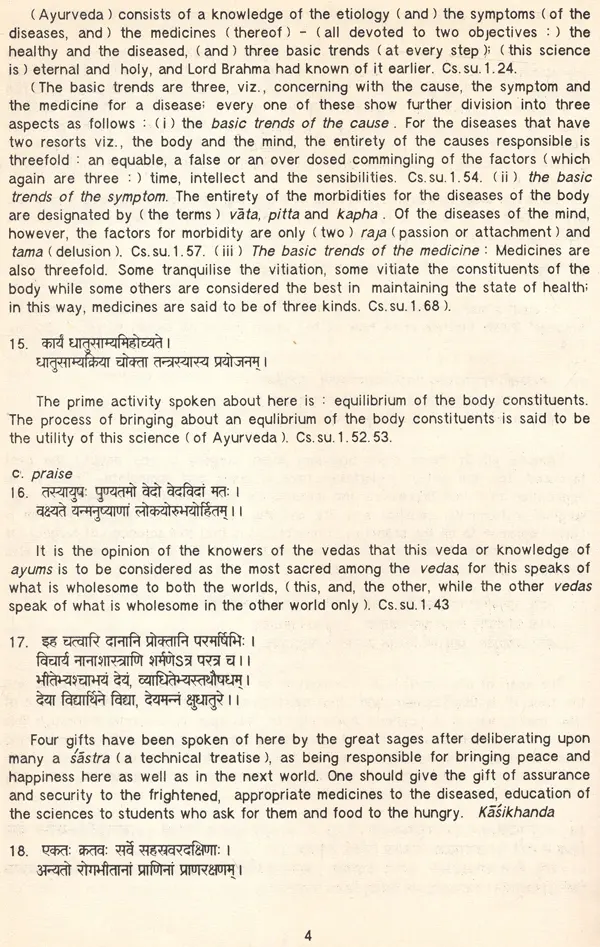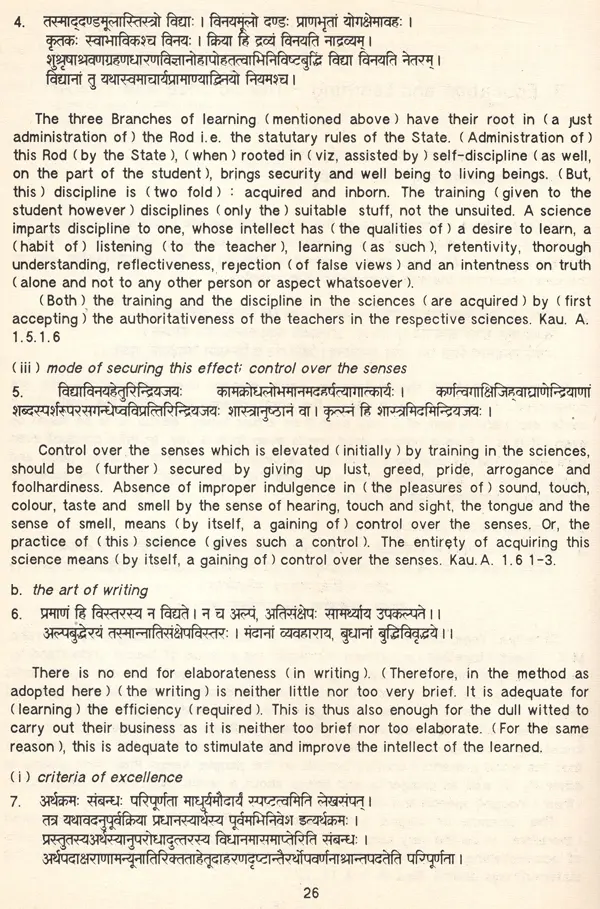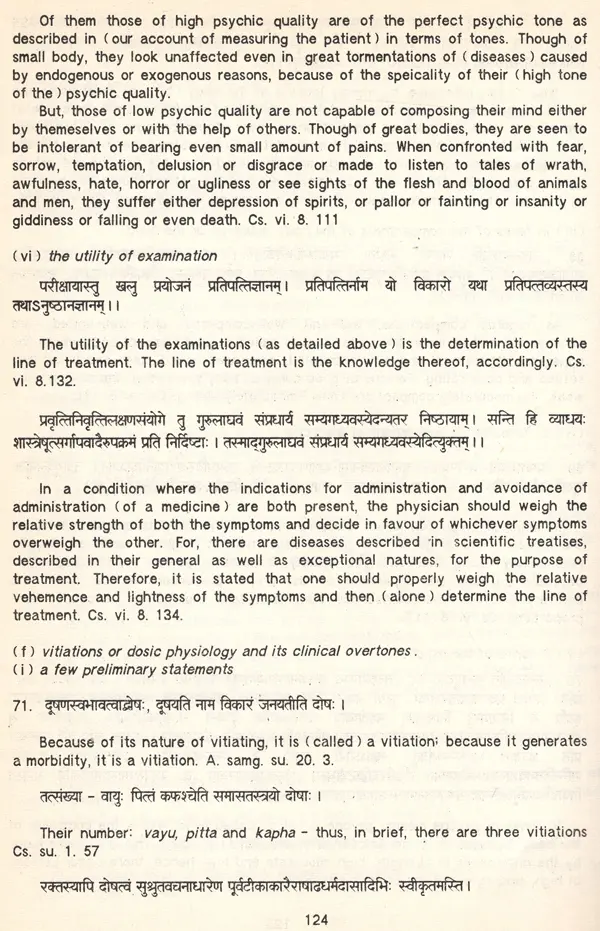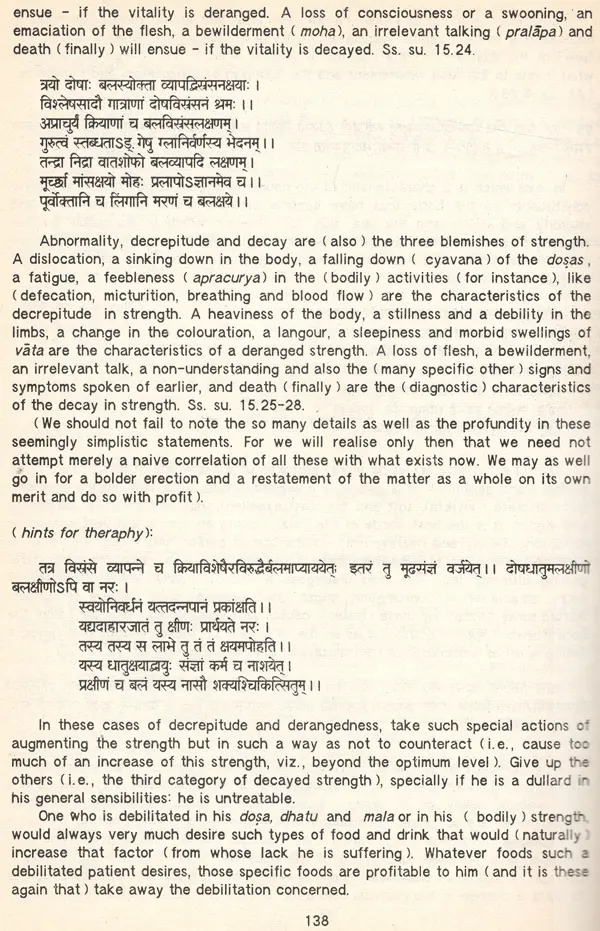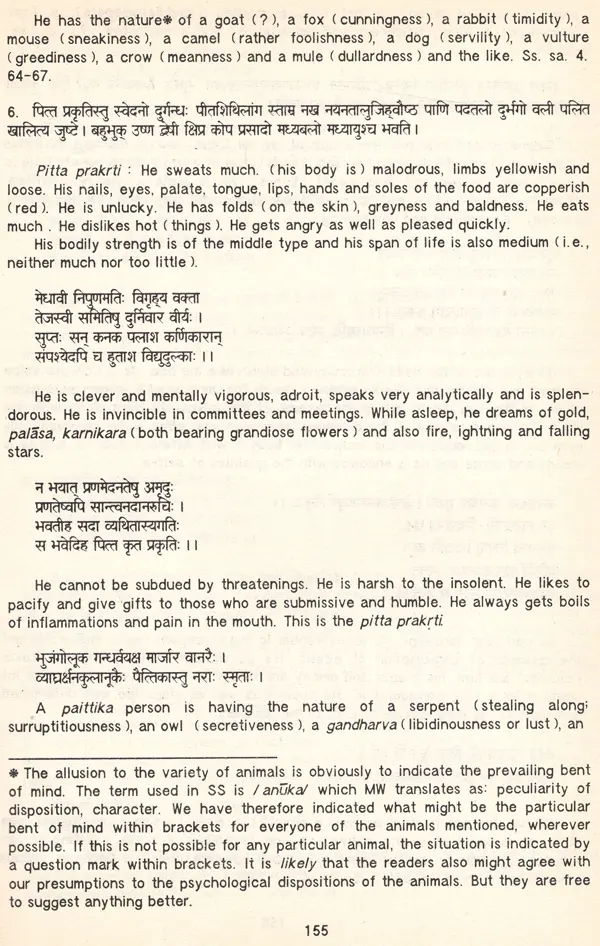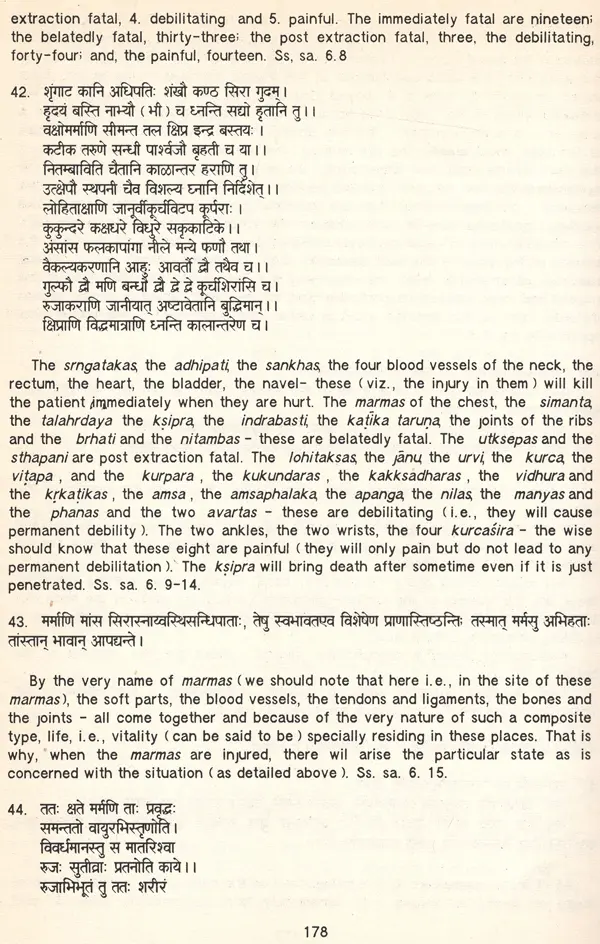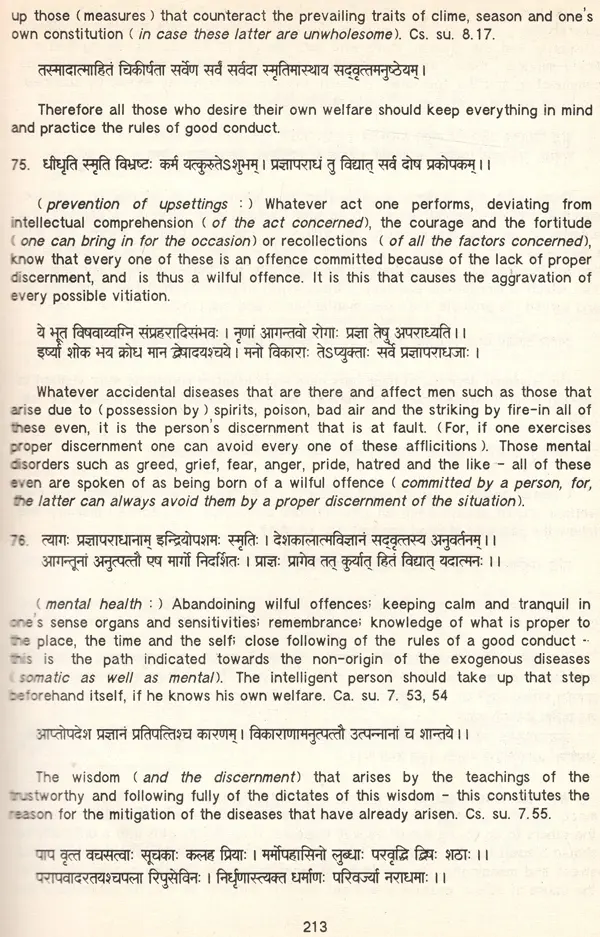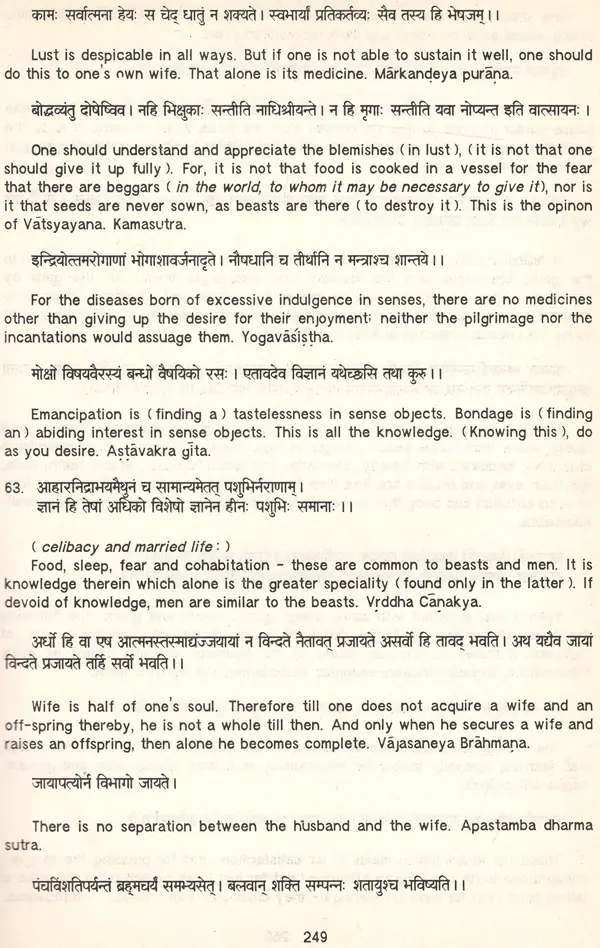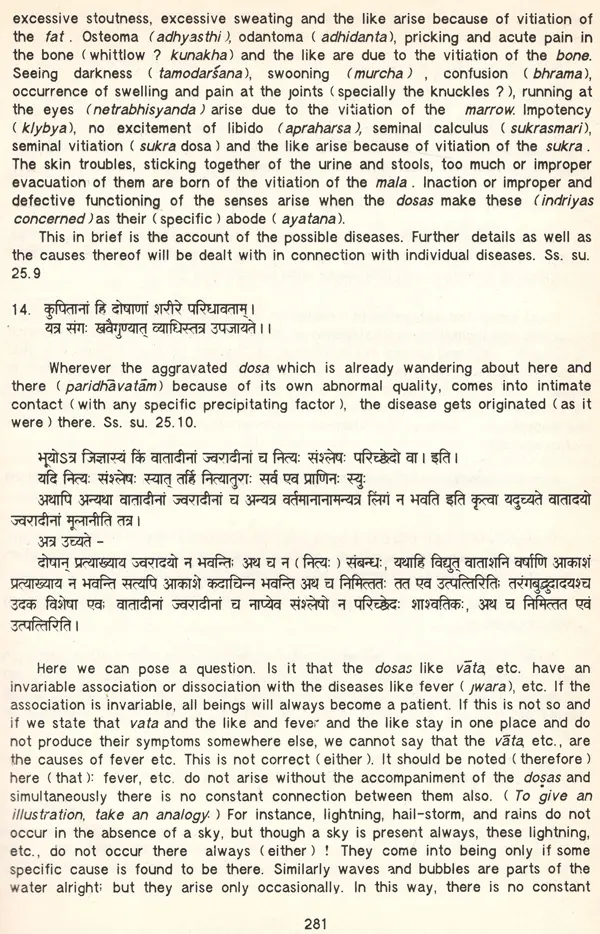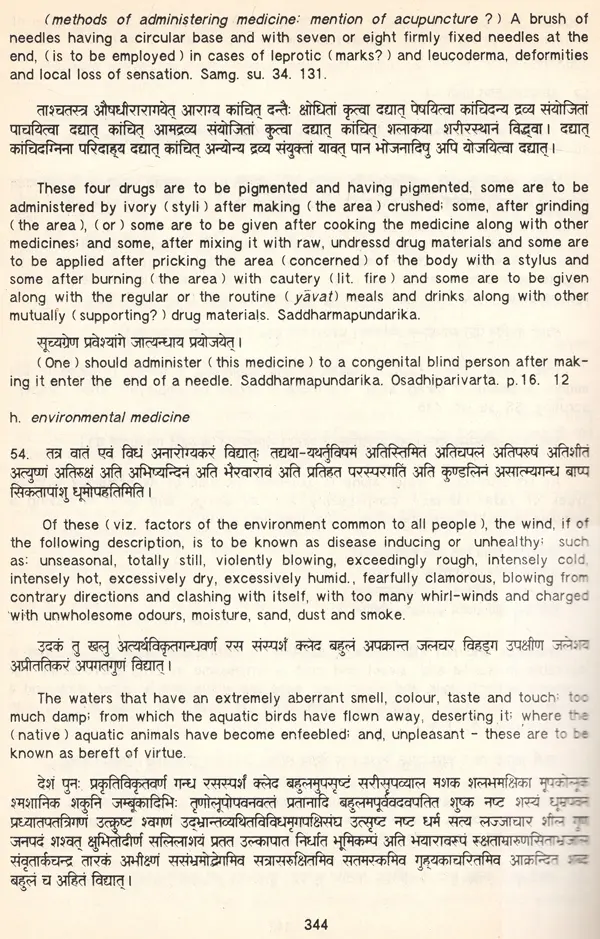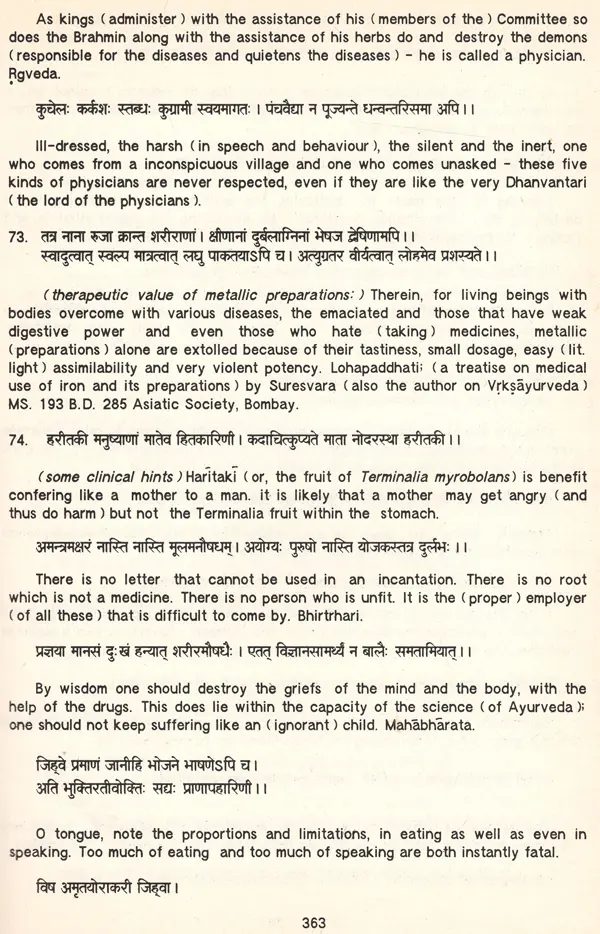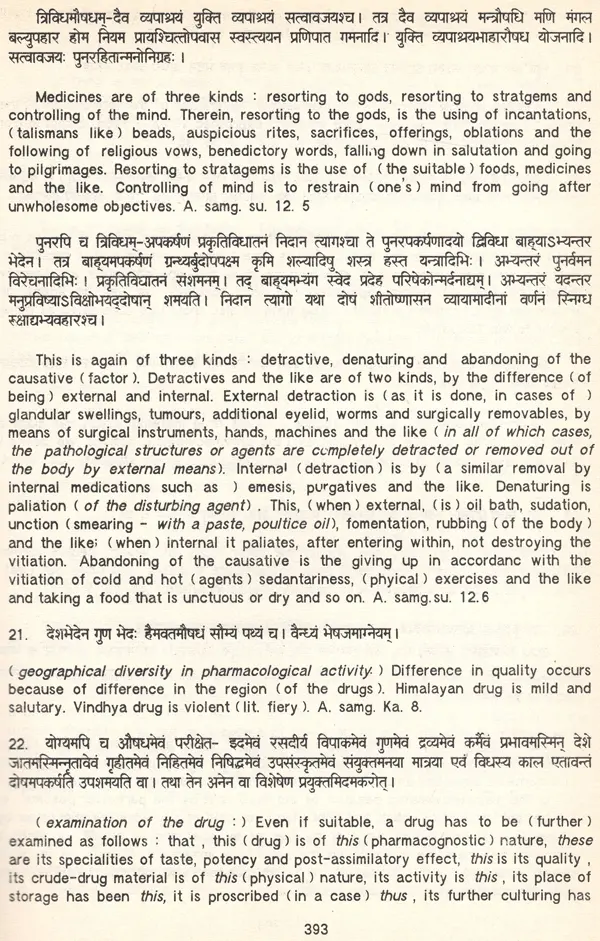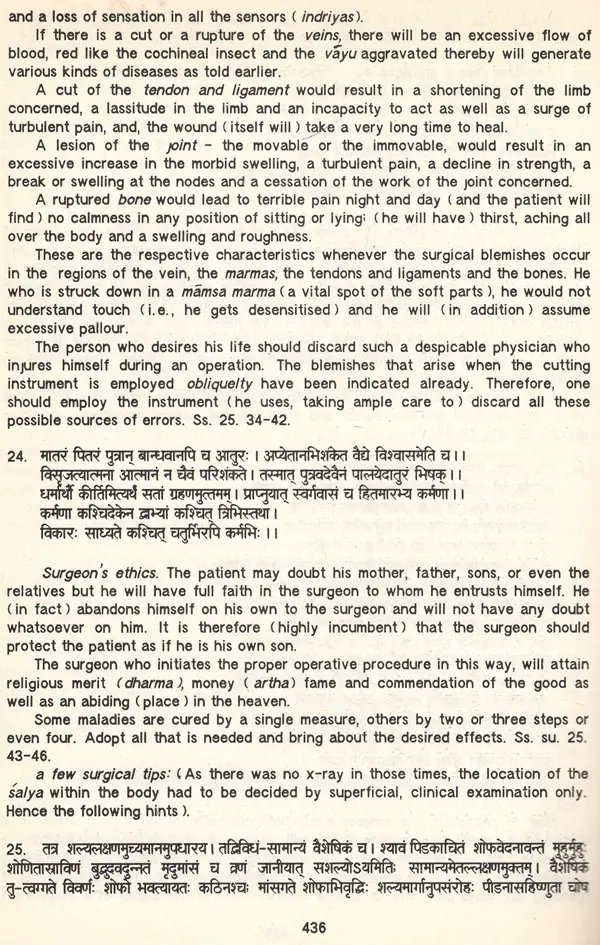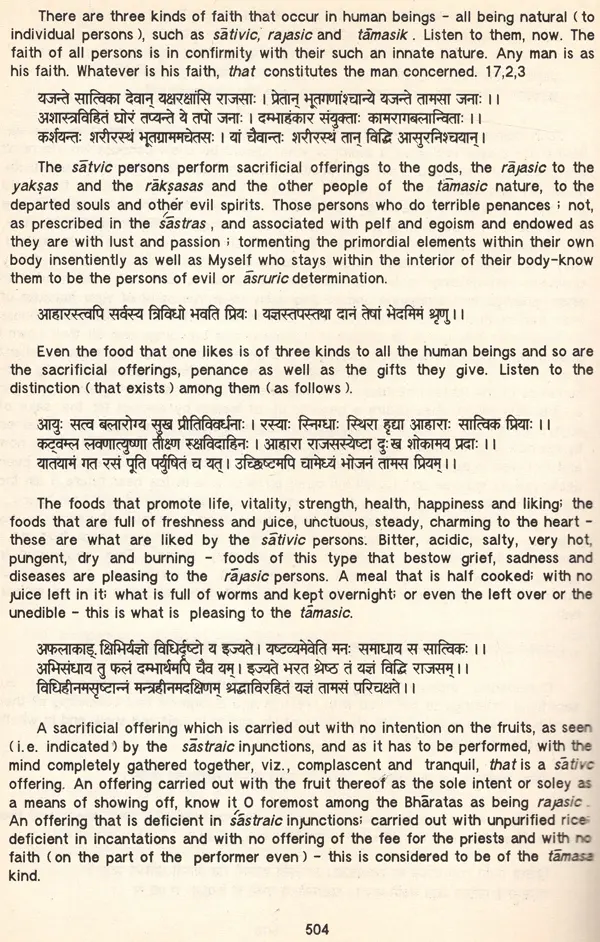
A Source Book of Indian Medicine (An Old & Rare Book)
Book Specification
| Item Code: | UAS477 |
| Author: | K.H. Krishnamurthy |
| Publisher: | B.R. Publishing Corporation |
| Language: | Sanskeit Text with English Translation |
| ISBN: | 8170186129 |
| Pages: | 547 |
| Cover: | HARDCOVER |
| Other Details | 9.50 X 6.50 inch |
| Weight | 330 gm |
Book Description
Medicine is a science. Its practice is an art however deep is a physician's knowledge. Every clinical state is rather unique and demands an empathic skill by him. It demands constant and actual experience as well as devoted attention to the individual human being. It has overtones, in fact, to the very attitude a person has towards life and his own. Here are the relevant social order and the resolution of its disruptive affects on the individual man. The sweep of modern medicine is thus almost all embracing. The book, executed as a project of the University Grants Coinmission, exa mines this possibility anthologically. It does so from as wide a range of Sanskrit sources as felt necessary. This includes the Vedas, the Edicts, the Upanishads, the Dharmashastras and the Darshanas besides many classical texts on ayurveda. and their commen-taries and so on. The highly rationalistic modern mind would be more impressed if it is made to acquaint itself as directly as possible with the original statements of the sanskrit authors. This is why the anthological method is choosen towards this objective. This involves effective selec-tion of the sources and quotations in sanskrit, arranging them in an order best condusive to their appreciation by students of modern medicine. Experiment is a purposeful mani pulation of the circumstances to check the veracity of our hypothesis. In this sense, science is probably new to ancient Indian ethos or rather to human civilisation itself. The book is an attempt to demonstrate this thesis.
After a long and distinguished career, spanning thirty years, Dr. K.H. Krishna murthy retired as Head, Department of Biology and Convenor, Faculty of History of Medicine, JIPMER, Pondicherry.. During this period, he actively worked on Ayurvedic Botany and Pharmacoânosy, Medical Linguistics and Advanced Aspects of Science in regional Indian languages. His research papers that have appeared in National and International Journals number over a hundred. His books include: Brain, Mind and Speech; Perspective for Modern Scientific Research; Physiology of Vision; A New Approach to the Science of Language; Wealth of Sushruta; and, Sanskrit and Science. His research schemes have been funded by many agencies like the University Grants Commission, Indian Council of Medical Research, Central Council of Research in Ayurveda and Siddha. He has also received many honours and awards.
The author expresses his deep gratitude and thankfulness to the authorities of the University Grants Commission, New Delhi for the pleasure they have given him to work in this Project as well as execution. the courtesy they have extended during its He is thankfully indebted to Dr.O.P. Bhargava, Former Director of JIPMER for his unstintedly helpful attitude and constant encouragement. He is equally grateful to Dr.P. Bahadur, the present Director, for all his encouragement. During the course of the project he has received significant assistance in his reference work from the following institutions: (1) Institute Francais, Indology Section, Pondicherry, (2) Bhandarkar Oriental Research Instiute, Poona, (3) Saraswati Mahal, Tanjore, (4) Asiatic society, Bombay and (5) Ayurvedic University, Jamnagar. The author is deeply indebted to the authorities and the personnel of these several Institutes who have helped him in various ways. He is highly thankful to many of his colleagues who have gone through portions of this work and have volunteered to offer him helpful criticism. As in his previous works, he finds it a pleasure to express his thanks to Shri B.D. Limaye of Sri Aurobindo Ashram for his numerous acts of assistance. The author is deeply indebted to Padma Bhushan Dr. B. Ramamurthi, the internationally distinguished neurosurgeon of India and a leading medical scientist, for having gone through portions of the Text patiently in spite of his busy schedule and honouring the work with his kind Foreword.
The scientific achievements of India in the millennia before and after Christ are not fully known to the scientific world because of many reasons, the chief of them being the foreign invasion of India by the Muslims and later by the Europeans. During this dark period of Indian history, the achievements of the earlier years were either suppressed or assimilated by the ruling races. During the European occupation, the rulers could not concede that anything worthwhile existed in India or anywhere in the World before the Greeks from the European civilisation is supposed to have taken roots. This teaching is found all over the West and has also been dinned into the subject race through the Western System of education. Thus even now, most of the intelligentsia of our country do not know about the great achievements in many aspects of science in India before 1000 A.D. These achievements have been in the field of mathematics, astronomy, metallurgy. medicine etc. For example, in the field of mathematics, there have been contributions even in the vedic period. The VEDANGA JYOTHISHA of Lagadha and the SULBA SUTHRAS have indicated knowledge which is now known as the Pythagoras theorem. (Rengachari --INSA NEWS March 1988). This is just one example. Similarly in the field of medicine and medical education. India had achieved great heights of knowledge and thinking, about which little is known to the public or to the medical men of India. Modern medical doctors of India are unfortunately quite ignorant of our achievements in these fields, specially because of the prejudice that has been created in their minds by their teachers, who also believed that all medical knowledge originated only from the Greeks and later from the Arabs.
Dr. K. H. Krishnamurthy, in this book has undertaken the most important task of providing us with the scientific knowledge and background of Indian Medicine, by studying the original Sanskrit Texts. Dr. Krishnamurthy has extensive knowledge of the subject as well as Sanskrit. Working in the Jawaharlal institiute of Post Graduate Medical Education and Research in Pondicherry, he has written a book, the "Wealth of Susrutha and books on "Brain, Mind and Speech" and "Principle and Methodology of Modern Science" The present anthology of Indian medicine covers a wide aspect of the science of life (Ayurveda) and deals with qualities of a physician, medical education and learning, and organisation of medical services. The philosophical and historical backgrounds are well presented and the chapters include medical principles, health and hygiene, dietetics, medicine, surgery and references to the classics and the Vedas.
This is an attempt at an anthological presentation of the sources of thinking on Medicine as it developed in India since ancient times. Medicine is interpreted here in its broadest sense as the World Health Organisation also recognises now, namely, that it is not concerned mereley with curing of the sick but is actively involved in establishing man at his best and positive health - psychological, social and even spiritual. Thoughts of value as concerning all of these aspects basic as well as somewhat technical are collected from a wide source of Indian writing in Sanskrit. Materials concerned with many other facets of Medicine, such as education, pedagogy, philosophical background, service organisation and history, are also included. One objective is to demonstrate with authoritative statements from original Texts that much of all this was cultivated in India continuously and purely scientifically. In addition, though this was done several thousands of years ago, they are often refreshingly relevant if not seminal even now. The term science is taken. here to mean an organised, purely rationalistic, verifiable body of knowledge that also happens to be of value in practical fields such as Medicine. In any chosen field. science grows historically at certain clearly recognisable steps: close observation, deep reflection, efficient classification, valid theorisation, technically competent expression plus experimentation and technology. Excepting the last two, which is what distinguishes modern science from the ancient, the details of all the others are clearly discernible in Sanskrit technical writing and are attempted to be depicted here as regards the Science and Art of Medicine. This work is meant mainly for non- Sanskrit knowing readers of modern Medicine who desire to be informed of these matters as expressed originally in the words of the classical masters in their own vigour, vitality, brevity, beauty and uniqueness of style. The translations provided endeavour to retain all these latter features along with additional material where needed to render the originals lucid and homely for the present day workers. It is believed that it is the absence of such attempts that has prevented them from being appreciated to the extent they deserve. A specific method of presentation is adopted as explained separately to show that these ancient technical writings are wholly comparable to the rigorous techincal writing of modern science. In general, the translation is not only put in the language and diction of modern science but also in full faithfulness of the originals.Quotations constitute isolated statements of classical authors selected for their significance, authoritativeness, representativeness, brevity, pithiness of expression and relevance to the present context. They are best considered as but tips of icebergs whose full extent is revealed only to a reader who can treat them as not merely informative but also educative. They will then form a rich and fertile material that would continue to yield fresh and valuable meanings depending upon the interest, the maturity and the contemplative calibre of the readers who are invited to subject the material provided here for such an exercise.
**Contents and Sample Pages**
